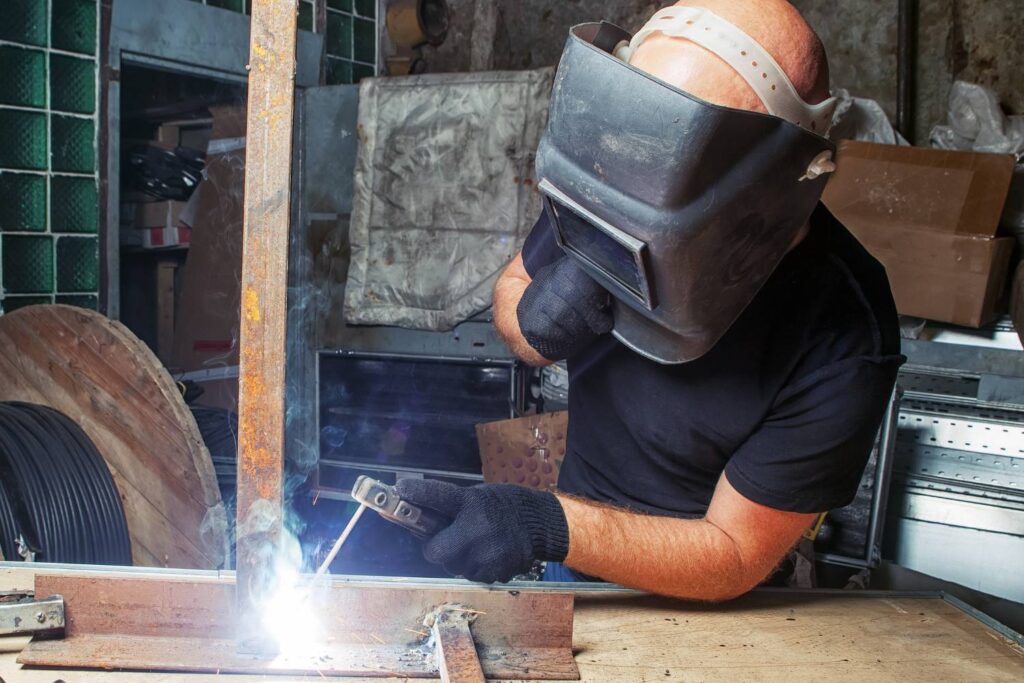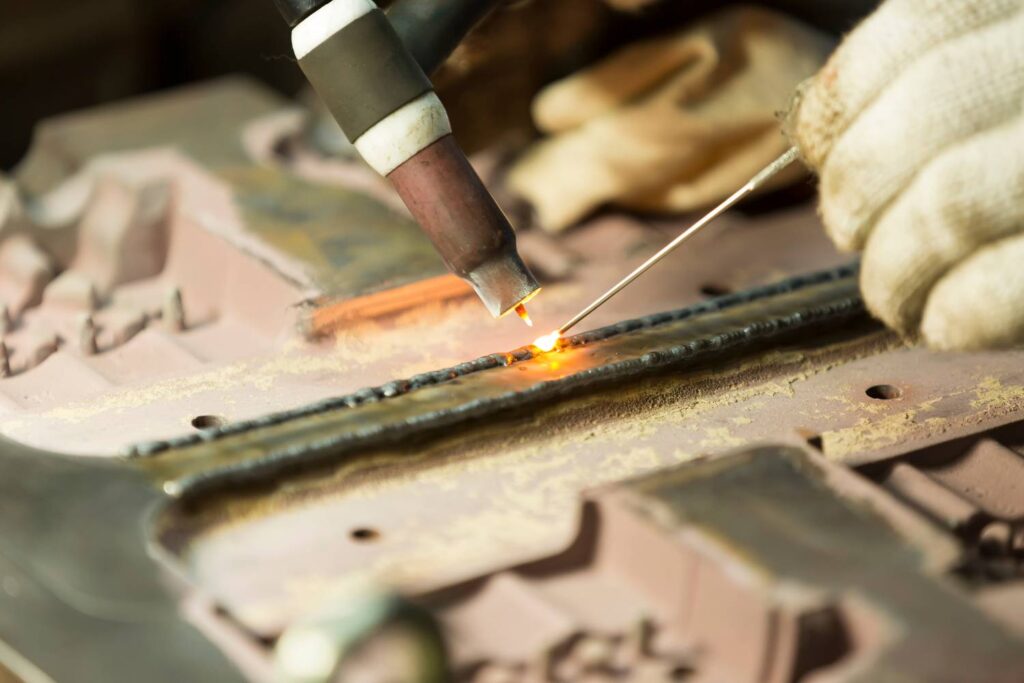Choosing the correct welding size is vital for ensuring your welds’ strength, durability, and appearance, regardless of whether you are tackling a small DIY project or working on a large industrial task.
The correct welding size can prevent issues like weak joints or excessive material usage, which can compromise the quality of your work.
This guide provides comprehensive insights into determining the right welding size, covering everything from the type of material you’re working with to the specific welding process you’re using.
Let’s get straight to the point
The right welding size is crucial for achieving strong, durable, and visually appealing welds for small DIY projects or large industrial tasks.
This guide covers key factors like material properties, welding processes, joint design, and environmental conditions influencing weld size.
It also provides practical tips for choosing the correct electrode, cable, and contact tip sizes to match your specific project needs, ensuring optimal performance and quality in your welds.

Key Factors Influencing Welding Size Selection
Material Properties
The base metal’s properties play a significant role in determining the appropriate welding size. Key material properties that influence welding size include:
- Tensile Strength: The stronger the material, the more substantial the weld size required to withstand the loads applied to the joint.
- Melting Point: Materials with higher melting points, like steel, may require larger weld sizes or specific techniques to ensure proper fusion.
- Thermal Conductivity: Metals with high thermal conductivity, such as aluminium, may need larger or more frequent welds to effectively manage heat distribution.
For example, when welding steel, the electrode composition should match the steel’s properties to ensure that the weld is as strong as the base material.
On the other hand, aluminium, due to its unique properties, often requires specific welding methods like MIG or TIG welding to achieve the desired results.
Welding Process
The welding process you choose has a significant impact on the weld size. Each welding method has its advantages and is suited to specific types of projects:
- MIG Welding: Known for its versatility and speed, MIG welding is suitable for thicker materials where deep penetration and broad weld beads are necessary.
- TIG Welding offers high precision and is ideal for thinner materials or projects where a clean finish is essential. It is often used for detailed work or where aesthetic appearance is critical.
- Stick Welding is a highly versatile method that can be used on various materials. The electrode size and type must be carefully chosen to match the material thickness and desired weld quality.
Understanding the strengths and limitations of each welding process will help you choose the appropriate weld size for your project.
Joint Design and Fit-Up
The design of the joint and how well the materials fit together significantly affect the welding size needed. Considerations include:
- Joint Type: The type of joint—such as butt, fillet, or lap—will determine the required weld size. Each joint type has specific requirements to ensure adequate strength and load distribution.
- Fit-Up: The alignment and gap between the welded materials (fit-up) must be precise to achieve the desired weld quality. Poor fit-up can lead to weak joints, requiring adjustments in weld size or technique to compensate.
For example, a butt joint, where two pieces are joined along their edges, may require a different weld size than a lap joint, where one piece overlaps another.
Ensuring proper fit-up and selecting the correct weld size for the joint type is critical for achieving a strong, durable weld.
Welding Position
The position in which you weld—whether flat, vertical, overhead, or horizontal—affects the weld size. Each position has unique challenges:
- Flat and Horizontal Welding: These positions generally allow for larger weld sizes due to better control over the weld pool and reduced defect risk.
- Vertical and Overhead Welding: These positions are more challenging and typically require smaller weld sizes to control the weld pool and prevent dripping or sagging.
In vertical or overhead welding, gravity can cause the weld pool to shift, making it harder to control the weld size and shape. Choosing the appropriate weld size for these positions is essential to prevent defects and ensure a strong bond.
Environmental Conditions
External factors, such as temperature, humidity, and wind, can significantly influence the welding process and the weld size required. For example:
- Windy Conditions: If you’re welding outdoors in windy conditions, the wind can disperse the shielding gas used in MIG or TIG welding, leading to weld contamination. In such cases, larger weld sizes or additional passes may be necessary to ensure a clean, strong weld.
- Temperature: Cold temperatures can cause the weld pool to cool too quickly, leading to cracking or poor fusion. To avoid these issues, adjusting the weld size or preheating the materials may be required.
Considering these environmental factors when selecting your weld size can help ensure that the weld meets the necessary quality and durability standards.
Service Conditions
The conditions under which the welded component will operate also play a crucial role in determining the appropriate weld size. Considerations include:
- Load Bearing: If the weld will bear significant loads or stresses, a larger weld size may be necessary to distribute the load effectively.
- Exposure to Corrosive Environments: In environments where the weld will be exposed to corrosive elements, such as chemicals or saltwater, choosing the right weld size and material is essential for long-term durability.
- Temperature Variations: If the weld is exposed to extreme temperatures, such as in high-heat environments, the weld size and technique must be carefully selected to ensure the joint can withstand thermal expansion and contraction without failing.
Understanding the service conditions will help you select a weld size that meets the immediate project requirements and ensures the longevity and safety of the welded structure.
Selecting the Right Welding Size for Common Materials
Aluminium and Aluminium Alloys
When welding aluminium and its alloys, the material’s high thermal conductivity and low melting point necessitate careful weld size selection.
MIG welding is preferred for thicker aluminium due to its speed and efficiency, using a consumable wire electrode and shielding gas.
TIG welding provides greater control and precision, making it ideal for thinner materials and projects needing a high-quality finish.
Matching the weld size to the material thickness is crucial to achieve proper penetration without causing burn-through.
Stainless Steel
Welding stainless steel is challenging due to its high chromium and nickel content, which can cause warping or cracking if not properly managed.
TIG welding is favoured for its precision and ability to maintain corrosion resistance, making it ideal for applications needing a clean finish. MIG welding is faster but requires careful control to prevent defects.
Stick welding is versatile and suitable for thicker stainless steel. The correct weld size depends on material thickness, joint design, and specific application needs.
Copper and Brass
Welding copper and brass, known for their high conductivity, requires precise method and weld size selection. TIG welding is recommended for its precision and heat control, which are crucial for preventing warping.
Gas welding suits thin or decorative sections needing low heat input, while laser welding is ideal for intricate work requiring high precision and minimal heat.
The key is to choose a weld size that ensures strength without causing overheating, which could lead to distortion or weakening of the joint.
Titanium and Nickel Alloys
Due to their high melting points and reactivity with air, welding titanium and nickel alloys demands special techniques.
TIG welding is the preferred method for both materials. Titanium requires an inert atmosphere to prevent contamination and oxidation, with precise weld size and a controlled environment crucial for quality.
Nickel alloys, known for their corrosion resistance and strength, require careful heat management to prevent cracking or distortion.
Choosing the correct weld size involves understanding these materials’ specific properties and meticulously controlling the welding process to avoid defects.

Practical Tips for Determining the Appropriate Welding Size
Understanding Electrode Sizes
- Thicker Electrodes are best for thicker materials, offering deeper penetration and faster welding speeds. They are typically in flat or horizontal positions.
- Thinner Electrodes: Suited for precision work on thinner materials, particularly in vertical or overhead positions where control is essential.
Match electrode size to material thickness and welding position for optimal results.
Selecting the Right Cable Size
- Circuit Length: Measure the total circuit length to determine the appropriate cable size.
- Power Source Output: Ensure the cable can handle the maximum amperage output of your welding power source.
- Duty Cycle: Choose a cable size that supports the machine’s output during continuous operation.
Proper cable sizing prevents issues like voltage drops and overheating, ensuring safe and efficient welding.
Choosing the Right Contact Tip Size
- Contact Tip Size: The welding wire diameter must match to ensure smooth wire feeding and stable arcs.
Incorrect contact tip sizes can cause erratic wire feeding, arc instability, and weld defects, compromising the weld quality. Select the correct size for consistent, high-quality welds.
Conclusion
Selecting the right welding size is essential for achieving high-quality, durable welds tailored to your project’s needs.
You can ensure your welds meet structural and aesthetic requirements by carefully considering material properties, welding processes, joint design, and environmental conditions.
Understanding the nuances of different welding techniques and materials will empower you to make informed decisions, resulting in welds that are not only strong and reliable but also visually appealing.
Frequently Asked Questions
Consider the thickness of the materials being welded, the welding process you’re using (MIG, TIG, Stick, Flux-Cored), the joint design, the welding position, and the specific requirements of the weld design, such as strength and appearance.
Thicker materials require larger welding sizes to ensure adequate penetration and strength, while thinner materials need smaller sizes to prevent burn-through and distortion.
Yes, different welding processes have unique requirements for welding size. For example, TIG welding often uses thinner electrodes for precision work, while Stick welding might use thicker electrodes for deeper penetration on thicker materials.
The joint design determines the filler material needed to complete the weld. For instance, a fillet weld might require a different size than a butt weld to achieve the desired strength and fill the joint correctly.
Welding positions (flat, vertical, overhead, horizontal) can influence the control of the weld pool and penetration. Some positions require smaller sizes for better control and to prevent gravity from affecting the weld quality.

